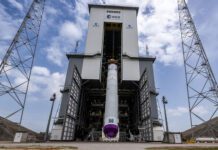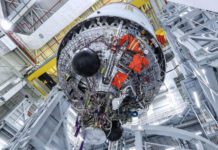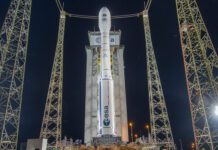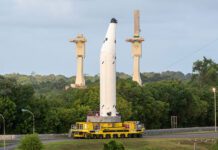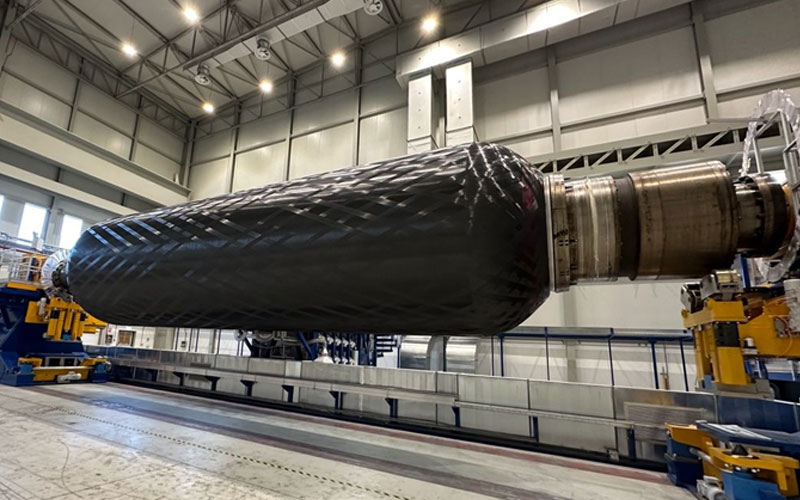
Italian rocket maker Avio has announced that the solid fuel P160C booster has passed its critical design review. The booster will be used aboard both the ArianeGroup Ariane 6 Block 2 rocket variant and Avio’s Vega E rocket.
The European Space Agency announced that it would be pursuing the development of an upgraded P120C booster in March 2022. At the time, the agency explained that it would be around one metre taller than its predecessor, feature 14 tonnes of additional solid propellant, and enable a 2,000-kilogram performance boost “for a typical mega-constellation deployment mission” aboard an Ariane 64 rocket.
The P160C booster update was part of a presentation outlining Avio’s consolidated 2023 financial results. The booster is being developed under the Europropulsion banner, a joint venture between Avio and ArianeGroup. According to Avio, the P160C booster’s critical design review was successfully completed in March 2024. It was also revealed that manufacturing of the Insulated Motor Case (IMC) for the first P160C booster to be test fired is currently ongoing.
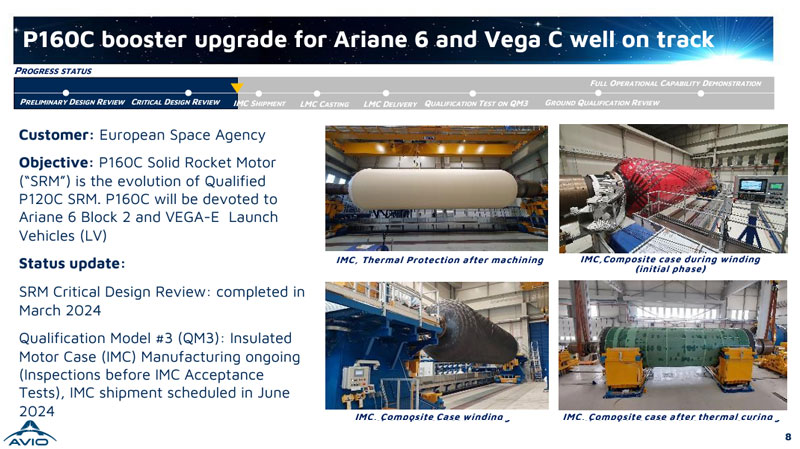
The IMC is essentially the shell into which the solid fuel is packed. It serves as both the combustion chamber and the structure that will be subjected to mechanical loads during flight. According to the 13 March Avio report, the IMC for the first static fire test will be ready for shipment by June.
In the company’s 2023 half-year results presentation, Avio explained that the IMC shipment was expected to occur in April 2024. Regulus would then complete casting by mid-2024, allowing for the initial static fire test to be conducted towards the end of 2024. With the shipment of the IMC now expected to occur in June, the static fire test may have already slipped into early 2025.
In addition to outlining the progress of its P160C development, the Avio report also revealed the company’s progress with the development of Vega E. The rocket will feature three stages. The first will be the P160C booster, and the second will be the Zefiro 40 solid fuel booster, which is the reason that Vega C is currently grounded. The third stage will be a liquid fuel stage powered by the company’s M10 methalox engine. When it’s introduced in 2026, the rocket will be capable of carrying 25% more to orbit than its predecessor, Vega C.
To date, Avio has completed two hot fire test campaigns of the M10 engines: one in 2022 and another in 2023. Additionally, in 2023, the company completed wind tunnel testing as part of the vehicle’s design review process.

